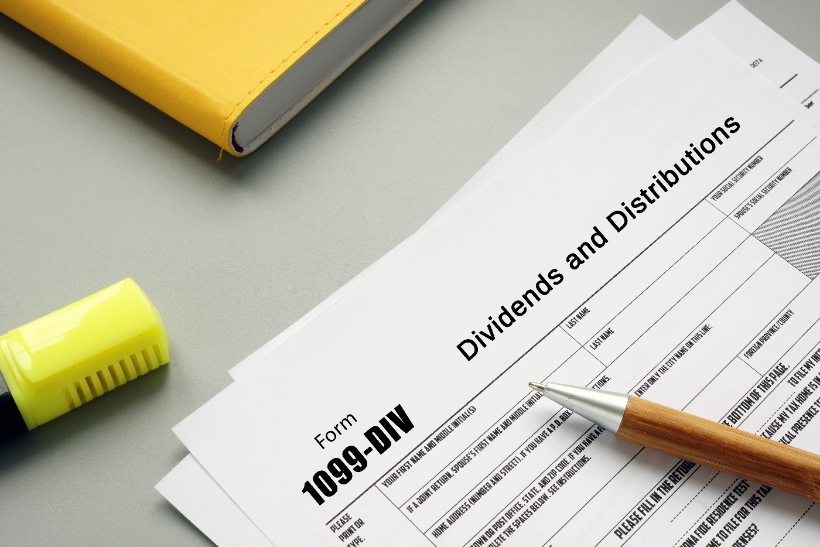Capital Gains and Income: Are You Ready to Realize How Your Gains Affect Your Taxes?
Published:
Did you realize this about your capital gains?
Are Capital Gains Considered Income?
Capital gains are profits earned from the sale of capital assets like stocks, mutual funds, real estate, and precious metals. One of the concerns taxpayers face is whether or not they’re considered income. The answer is yes. Capital gains are considered taxable income.
Therefore, when taxpayers sell an asset, they must report the gains earned from the sale as income and pay taxes accordingly. However, there are significant differences regarding how long an asset was held, and the associated tax rates will vary.
Capital assets include businesses, investment securities, and real property, and when held for more than 12 months, they are considered long-term, while assets held for less than 12 months are considered short-term. When an investor sells or trades a capital asset, they may generate a gain or loss, which is the difference between the asset’s purchase price and the sale price.
Realized gains are taxable, but unrealized gains are not. That means if an investor owns a capital asset that has increased in value but has not yet sold or traded it, they are not taxed on the gains. However, if they sell or trade the asset and realize the gain, it becomes subject to capital gains tax.
The tax rate is determined by how long the asset was held before realizing the gain. Long-term capital gains are those generated from the sale of assets held for more than 12 months, and short-term capital gains are generated from assets held for less than 12 months. The tax rate on long-term capital gains is generally lower than that of short-term gains, and it varies depending on the individual’s income level.
Does My Taxable Income Include My Capital Gains?
Yes, capital gains are generally included in taxable income unless the asset generating the gain was held in a tax-sheltered account like an individual retirement account (IRA).
When you sell or trade an asset and realize a gain, this is known as a “realization” event. This means that the gain is no longer unrealized and becomes subject to tax. The rate of taxation on capital gains depends on two things – the holding period of the asset and the individual’s income level.
If the asset was held for less than one year before being sold, the gain is considered a short-term capital gain and taxed at the same rate as ordinary income. On the other hand, if it was held for more than one year, the gain is classified as a long-term capital gain and has its own tax rates, which are generally lower than those of short-term gains. The tax rates on long-term capital gains vary depending on the individual’s income level and can range from 0% to 20%.
To calculate your total taxable income, you need to include your capital gains in your income calculation. This is done by adding your capital gains to your other sources of income such as wages, salaries, and dividends. The total amount is then subject to taxation based on your income level and filing status.
It’s worth noting that there are other events aside from sales that can trigger a realization event, such as a gift or exchange of assets, or if an asset becomes worthless or is stolen. In these situations, the gain or loss is calculated based on the fair market value of the asset at the time of the event.
Ordinary Income Tax Rates & Brackets
In the United States, individual taxpayers are subject to ordinary income tax rates based on their taxable income. The tax system in the US is progressive, which means that tax rates increase with income levels. The progressive system is designed to ensure that those who earn more pay a higher percentage of their income in taxes.
There are different tax brackets that apply to different levels of taxable income. Taxable income is calculated by subtracting allowable deductions and exemptions from gross income. The tax brackets are divided into ranges or brackets. Taxpayers pay a different tax percentage for each bracket.
The tax percentage only applies to the portion of a taxpayer’s income that falls within that specific bracket. For example, if a taxpayer has a taxable income of $50,000, they would pay 10% on the first $10,275, 12% on the portion between $10,276 and $41,775, and 22% on the remaining portion between $41,776 and $50,000.
Marginal tax rates can have a significant impact on a taxpayer’s overall tax liability, especially if they have income that falls into higher tax brackets.
Types of Investments That Generate a Taxable Gain or Loss
Investments always come with the possibility of earning a profit or incurring a loss. While nobody wants to lose their hard-earned money, it’s important to keep in mind that some losses may actually be advantageous for tax purposes. When discussing taxable gains and losses, it’s essential to keep in mind that they only apply to capital assets.
So, which investments generate a taxable gain or loss? Capital assets, including but not limited to stocks, mutual funds, real estate, precious metals, and business assets, are some examples. These capital assets can generate either a long-term gain or loss or a short-term gain or loss. It’s crucial to know whether you have a long-term or short-term gain or loss because they will be taxed at different rates.
Long-term capital gains arise when a capital asset is held for more than one year and sold for a profit. For instance, the profit from the sale of a piece of real estate that is held for more than a year constitutes a long-term capital gain. Less than a year? If you sell a stock after holding it for only a few months and make a profit, that’s a short-term capital gain.
When calculating the taxable gain or loss on an asset, another essential factor to consider is the cost basis. The cost basis is simply the price paid to acquire the asset. The total gain or loss is the difference between this cost basis and the sale price of the asset in question.
It’s also worth noting that different types of capital assets are taxed differently. When selling collectibles, such as art or coins, the maximum tax rate is 28%, while other capital assets may have a maximum tax rate of 20%. This is one reason why it’s important to be aware of what type of capital assets you own and what their tax implications are.
Long-Term vs. Short-Term Capital Gains
When buying and selling capital assets, it’s important to understand the distinction between long-term and short-term capital gains. Long-term gains come from selling assets held for more than a year, while short-term gains are generated from assets held for a year or less. Both types of gains are subject to different tax rates, so it’s crucial to understand how they can impact your tax liability.
Definition of Long-Term Capital Gains and Assets
Capital gains refer to the profit that an investor receives when they sell an asset for more than they originally paid for it. When these gains are classified as long-term, it means that the asset was held for a specific period of time before being sold. This holding period is a crucial factor in determining whether an investor will be subject to long-term or short-term capital gains tax rates.
The holding period is the length of time that an investor held the capital asset before selling it. In general, an asset must be held for more than one year to qualify as a long-term capital asset. Examples of long-term capital assets include real estate, business stock, mutual funds, and precious metals. Capital assets that are held for one year or less are considered short-term and are taxed at a higher rate.
The short-term capital gains tax rate is usually higher than the long-term capital gains tax rate. The long-term rate can vary depending on an individual’s income level, filing status, and the type of asset being sold. As of 2021, the maximum long-term capital gains tax rate is 20%, while the maximum short-term capital gains tax rate can be as high as 37%.
Treatment of Long-Term Capital Gains vs. Short-Term Capital Gains Taxes
When it comes to capital gains taxes, whether they are considered long-term or short term can make a significant difference in how they’re taxed. Long-term capital gains are the profits made from selling assets that have been held for more than one year, while short-term capital gains are those made from assets held for one year or less.
The primary difference between long-term and short-term capital gains taxes is the rate at which they are taxed. As of 2021, long-term capital gains are taxed at a reduced rate, while short-term gains are subject to the same taxes as ordinary income. The specific rate depends on the individual’s taxable income and filing status.
Short-term capital gains, on the other hand, are subject to ordinary income tax rates, which means they’re taxed at the same rate as the investor’s marginal tax rate for that year. This is because short-term gains are considered part of the investor’s taxable income.
To illustrate the difference in tax liability between short-term and long-term capital gains, let’s consider an example. Say an investor sells stocks with a $10,000 profit and has a taxable income of $100,000. If those stocks were held for more than a year, the investor would owe $1,800 in taxes on that $10,000 profit ($10,000 x 20% = $2,000 minus $200 in refunds from the 0% and 15% brackets). If the stocks were held for one year or less, the investor would owe $3,700 in taxes on that $10,000 profit ($10,000 x 37%). This stark difference highlights why investors may choose to hold assets for more than a year to benefit from the reduced long-term capital gains rate.



